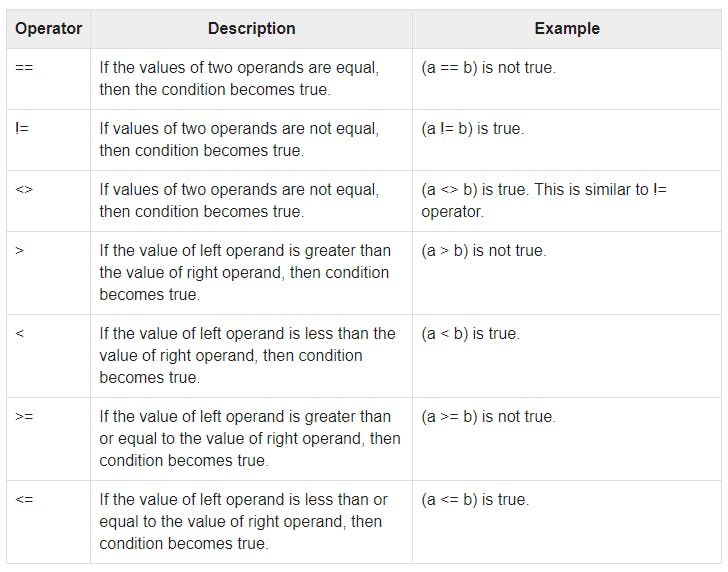Conditional Statement in Python perform different computations or actions depending on whether a specific Boolean constraint evaluates to true or false. Conditional statements are handled by IF statements in Python.
if True:
print("if True")
elif False:
print("elif True")
else:
print("neither True")
if True
Conditional Operator
- Comparison Operator :

a=5
b=7
if a<b:
print("a is less than b")
elif a>b:
print("a is greater than b")
else:
print("a is equal to b")
a is less than b
- Identity Operator :

x=2
y=2.0
z="2"
if x is y:
print("x and y are same")
elif x is z:
print("x and z are same ")
elif y is not z:
print("y and z are not same")
else:
print("all are different")
all are different
- Membership Operator :

x = [1,2,3,4,5,6,7,8,9]
y = 8
z= 0
if y in x:
print("Y is in X List")
if z not in x:
print("Z is not in X List")
Y is in X List
Z is not in X List
Ternary operators
Ternary operators are also known as conditional expressions are operators that evaluate something based on a condition being true or false. It was added to Python in version 2.5.
# Program to demonstrate conditional operator
a, b = 10, 20
# Copy value of a in min if a < b else copy b
min = a if a < b else b
print(min)
10
# Python program to demonstrate ternary operator
a, b = 10, 20
# Use tuple for selecting an item
# (if_test_false,if_test_true)[test]
# if [a<b] is true it return 1, so element with 1 index will print
# else if [a<b] is false it return 0, so element with 0 index will print
print( (b, a) [a < b] )
# Use Dictionary for selecting an item
# if [a < b] is true then value of True key will print
# elif [a<b] is false then value of False key will print
print({True: a, False: b} [a < b])
10
10
# Python program to demonstrate nested ternary operator
a, b = 10, 20
print ("Both a and b are equal" if a == b else "a is greater than b"
if a > b else "b is greater than a")
b is greater than a
